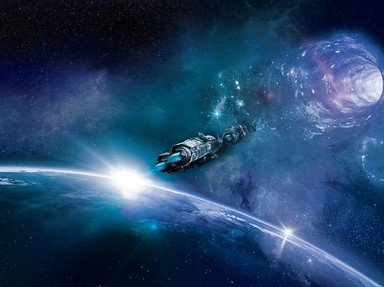Quiz Answer Key and Fun Facts
1. Our story begins on a note of persecution. In 1600, what author of 'On the Infinite Universe and Worlds' was burned at the stake?
2. What astronomer, famed for his laws of orbital motion, weighed into the plurality debate with 'Somnium' ('Dream') and 'Conversation with Galileo's Sidereal Messenger'?
3. When Galileo Galilei was put on trial by the Catholic Church for believing that the earth orbited the sun, Cardinal Boniface Caetani asked what Dominican monk to write Galileo's defense?
4. After these inauspicious beginnings, however, astronomical speculation began to take off. What English clergyman penned the 1638 treatise 'The Discovery of a World in the Moone', in which he set out to prove, in thirteen logical propositions, the existence of aliens on the moon?
5. Which other English clergyman wrote 'The Man in the Moone' (1638), arguably the first true work of science fiction, in which the Spanish sailor Gonzalez voyages to the moon and meets with its inhabitants?
6. A more famous story, 'Voyages to the Moon and the Sun', was written by what acerbic Frenchman, celebrated for the breadth of his wit and the length of his nose?
7. 'The Celestial Worlds Discover'd', Christiaan Huygens' 1698 attempt to reconcile extra-terrestrial life with theology, admits that perhaps humans are not superior to all other life forms -- but founders when, in an effort to prove that all other life forms must of course be essentially human, Huygens humorously imagines an intelligent alien ...?
8. Jonathan Swift's 'Gulliver's Travels' deals with the voyages of Lemuel Gulliver on Earth, but one 'island' he visits actually floats in the air, miles above the surface of the planet. Its inhabitants, quite alien by human standards, rule the continent below with an iron fist. What is the name of this island, home of the first alien race to threaten humanity?
9. Voltaire is most famous for his story 'Candide,' but in 1751 he published what short story, in which a colossal traveler from a planet orbiting the star Sirius visits Earth with his Saturnian companion?
10. Finally, Percival Lowell, self-appointed 'Roosevelt of Astronomy', published two works on a single planet in 1896 and 1908. In them, he claimed that the 'canals' he saw were conclusive proof of an intelligent alien species doomed by drought, and a sensation was born. What planet was he describing?
Source: Author
CellarDoor
This quiz was reviewed by our editing team before going online.
Any errors found in FunTrivia content are routinely corrected through our feedback system.
